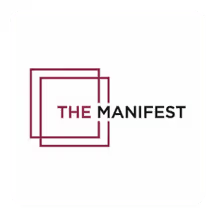.avif)
MCP Development
Build Smarter, Scale Faster: Modern MCP Server Development for AI-Driven Applications
Unlock the next generation of intelligent, scalable applications with Azumo's expert Model Context Protocol (MCP) Server development services. Whether you're building AI-powered workflows, orchestrating agent-based systems, or integrating with cloud platforms, our development team delivers robust, future-proof solutions tailored to your needs.

Introduction
What is an MCP Server
MCP (Model Context Protocol) Servers are lightweight, modular servers that expose specific functionalities—such as data access, tool integration, or workflow automation—via a standardized protocol. They enable hosts (like AI-powered IDEs or custom apps) to interact with local and remote services securely and efficiently.
MCP (Model Context Protocol) Servers are lightweight, modular servers that expose specific functionalities—such as data access, tool integration, or workflow automation—via a standardized protocol. They enable hosts (like AI-powered IDEs or custom apps) to interact with local and remote services securely and efficiently.
We Take Full Advantage of Available Features
Standardized integration with AI models, agents, and cloud services
Support for secure authentication and access control
Modular architecture for easy scalability and maintenance
Built-in observability and fault tolerance for mission-critical applications
Trusted Partner
A Proven Partner for AI and ML Development
We deliver highly skilled software engineers, data science professionals, and cloud specialists who consistently solve problems, complete tasks and work to power your projects forward. By quickly accessing these skilled developers, we help accelerate your time to market and ensure successful project outcomes.
4.9
93%
150%
Award winning development

Top AI Development Company
Top Software Developers
Top Staff Augmentation Company

Top AI Development Company
Top Machine Learning Company
Top Staff Augmentation Company

Top AI Development Company
Top Software Developers

Top Software Development Company

Top Software Development Company

Impact Company of the Year

Best in the West

Hot Vendor for AI
Our capabilities
Build modern MCP servers that connect AI agents to your enterprise data. Standardized context protocols streamline integration and cut development time for complex AI workflows.
How We Help You:
AI Workflow Orchestration
Coordinate agent-based and multi-model workflows for advanced automation.
Cloud Platform Integration
Deploy and manage MCP Servers on AWS, Azure, or your preferred cloud provider.
Data Transformation Pipelines
Clean, format, and route data between systems with minimal latency.
Tool & Service Connectivity
Integrate with databases, APIs, and third-party services for unified operations.
Secure Access Management
Implement enterprise-grade authentication and access control.
Observability & Monitoring
Gain deep insights with built-in logging, monitoring, and troubleshooting tools.
Engineering Services
MCP (Model Context Protocol) Servers are lightweight, modular servers that expose specific functionalities—such as data access, tool integration, or workflow automation—via a standardized protocol. They enable hosts (like AI-powered IDEs or custom apps) to interact with local and remote services securely and efficiently.
Custom MCP Server Development
Tailored server builds using Python, JavaScript, or your preferred stack.
Rapid Prototyping & Deployment
Use our LLM based playbooks to accelerate development for your Enterprise apps.
Workflow Design & Implementation
We architect and deploy agent-based, AI-driven business processes to increase efficiency.
Integration Consulting
We provide expert guidance on connecting MCP Servers with existing tools and cloud infrastructure.
AI Service Models
Our AI Development Service Models
We offer flexible engagement options tailored to your AI development goals. Whether you need a single AI developer, a full nearshore team, or senior-level technical leadership, our AI development services scale with your business quickly, reliably, and on your terms.
Requirements Discovery
De-risk your AI initiative from the start. Our Discovery engagement aligns business objectives, tech feasibility, and data readiness so you avoid costly rework later.
POC and MVP Development
Prove value fast. We build targeted Proofs of Concept and MVPs to validate AI models, test integrations, and demonstrate ROI without committing to full-scale development.
Custom AI Development
End-to-end AI development tailored to your environment. We handle model training, system integration, and production deployment backed by top AI engineers.
AI Development Staffing
Access top-tier AI developers to fill capability gaps fast. Our vetted engineers plug into your team and stack, helping you meet delivery goals without compromising quality or velocity.
Dedicated AI Development Team
Build an embedded AI Development team that works exclusively for you. We provide aligned, full-time engineers who integrate with your workflows and own delivery.
Virtual CTO Services
Our Virtual CTO guides your AI development strategy, ensures scalable architecture, aligns teams, and helps you make informed build-or-buy decisions that accelerate delivery.
.webp)
Schedule A Call
Ready to Get Started?
Model Context Protocol Development
Consult
Work directly with our experts to understand how fine-tuning can solve your unique challenges and make AI work for your business.
Build
Start with a foundational model tailored to your industry and data, setting the groundwork for specialized tasks.
Tune
Adjust your AI for specific applications like customer support, content generation, or risk analysis to achieve precise performance.
Refine
Iterate on your model, continuously enhancing its performance with new data to keep it relevant and effective.
With Azumo You Can . . .
Get Targeted Results
Fine-tune models specifically for your data and requirements
Access AI Expertise
Consult with experts who have been working in AI since 2016
Maintain Data Privacy
Fine-tune securely and privately with SOC 2 compliance
Have Transparent Pricing
Pay for the time you need and not a minute more
Our finetuning service for LLMs and Gen AI is designed to meet the needs of large, high-performing models without the hassle and expense of traditional AI development
Results
Leaders Prefer Us for AI Development
Our Nearshore Custom Software Development Services focuses on developing cost-effective custom solutions that align to your requirements and timeline.
24/7
40%
+90%
Their team consistently brings thoughtfulness, professionalism, and ownership, making them a valued extension of our internal team.
Behind every huge business win is a technology win. So it is worth pointing out the team we've been using to achieve low-latency and real-time GenAI on our 24/7 platform. It all came together with a fantastic set of developers from Azumo.
We’ve been working with Azumo since our founding. Their team has been great to work with. We built out a massive AI based data platform with their help. They can handle just about anything.
Case Study
Scoping Our AI Development Services Expertise:
Explore how our customized outsourced AI based development solutions can transform your business. From solving key challenges to driving measurable improvements, our artificial intelligence development services can drive results.
Our expertise also extends to creating AI-powered chatbots and virtual assistants, which automate customer support and enhance user engagement through natural language processing.
Benefits
Seamless AI Integration
Connect multiple AI models, agents, and data sources effortlessly.
Scalable Architecture
Easily grow your system as your business and data needs expand.
Real-Time Data Processing
Ensure fast, reliable data routing and transformation.
Reduced Operational Overhead
Automate complex workflows and minimize manual intervention.
Future-Proof Design
Modular solutions that adapt to evolving technology and business requirements.



